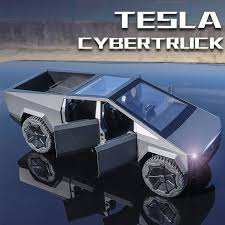What are the weaknesses of Tesla Model 3?
Tesla's biggest weakness is body construction. Some areas of the Model 3 consist of too many parts, like its wheel wells, and the vehicle features multiple kinds of welding techniques, a practice that increases costs without serving a discernible benefit.

It's important to note that these weaknesses may not be significant or relevant to all drivers, and the overall experience of owning a Tesla Model 3 may vary depending on individual preferences and circumstances.
Here are the biggest weakness given below:
- Build quality issues
- Limited range
- Lack of physical control:
- Autopilot limitation:
- Price
- Charging time
- Lack of storage space
- Limited rear visibility
- Software bugs
- Maintenance and repairs
Build quality issues
Some early production Model 3s had quality control issues, such as panel gaps and paint imperfections. However, Tesla has since made improvements in their manufacturing process, and the build quality has improved over time.
Limited range
While the Model 3 has a range of up to 358 miles (WLTP) on a single charge, this can be affected by factors such as temperature, driving style, and the use of accessories. It may not be suitable for long road trips or for drivers who live in areas without a strong charging infrastructure.
Lack of physical controls
The Model 3's minimalist interior design features a large touchscreen display, but there are no physical buttons or knobs for climate control, which some drivers may find inconvenient or distracting.
Autopilot limitations
Tesla's Autopilot system is not fully autonomous and still requires the driver to remain alert and ready to take control of the vehicle at any time. It may also not work well in certain weather conditions, such as heavy rain or snow.
Price
The Model 3 is still relatively expensive compared to other cars in its class, which may make it less accessible to some buyers.
Charging time
While Tesla's Supercharger network is widespread and fast, charging the Model 3 at home or at other public charging stations can be slower, especially if using a Level 2 charger. This may be inconvenient for drivers who frequently travel long distances and need to recharge their vehicles quickly.
Lack of storage space
The Model 3's trunk space is relatively small, and there is no front trunk (or "frunk") storage area as in the Model S and Model X. This may limit the amount of cargo or luggage that can be carried, especially for families or those who frequently travel with larger items.
Limited rear visibility
The Model 3's sleek design includes a sloping roofline and narrow rear window, which can limit visibility for drivers when reversing or changing lanes.
Software bugs
Like any complex piece of technology, the Model 3's software may occasionally experience bugs or glitches. While Tesla has been proactive in addressing these issues through over-the-air software updates, they can still be frustrating for drivers who rely on the car's technology features.
Maintenance and repairs
While Tesla's electric drivetrain and battery system are generally reliable, repairs and maintenance can be expensive due to the car's high-tech components and unique design. This may be a concern for drivers who are used to more conventional vehicles and want to minimize repair costs.
Previous entry: What is the disadvantage of Tesla?









